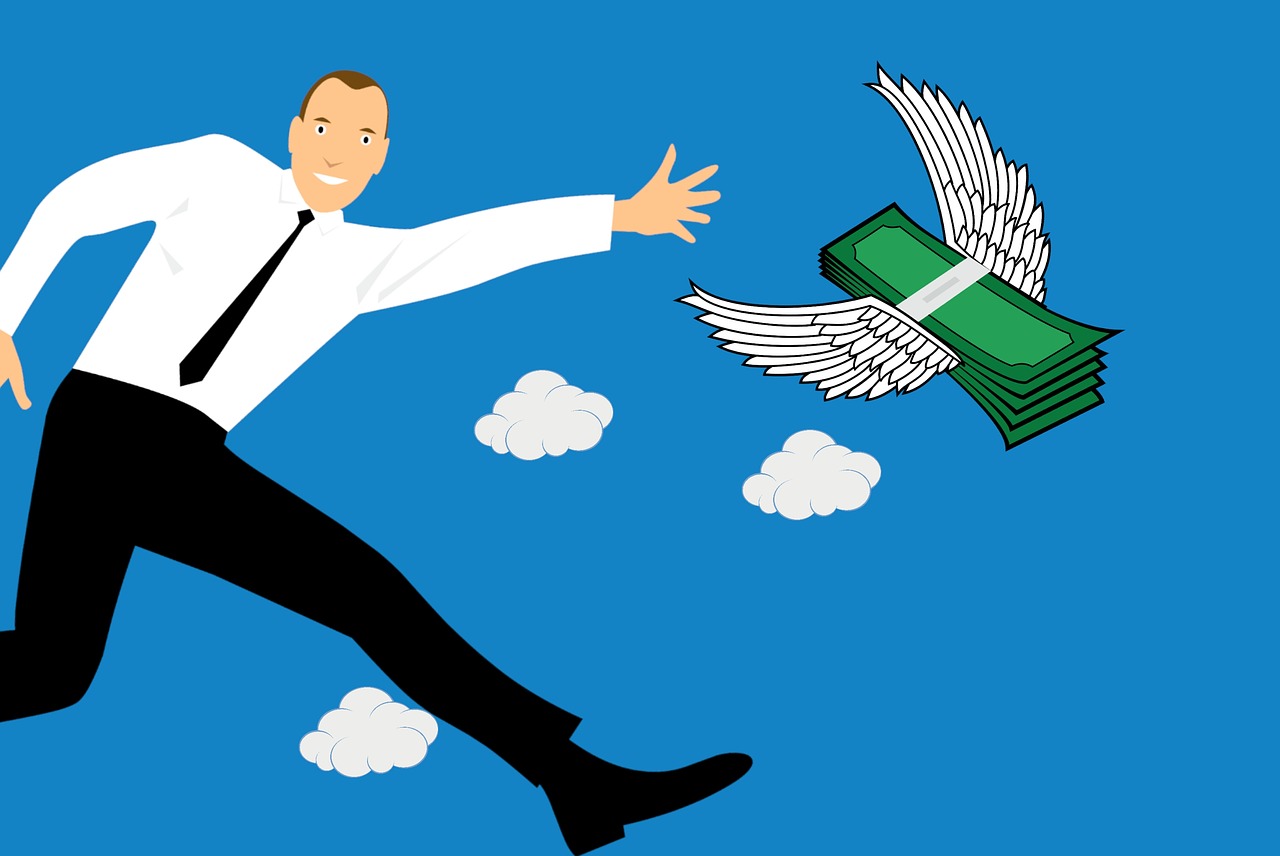With the vaccin being rolled-out and the economy gradually reopening we have seen rates rise higher. The benchmark 10-year Treasury currently yields ~1.7%. That is still low by historical standards, but higher than it started the year or what we have seen in 2020 (~0.50%). As a result we have seen the high flying Nasdaq correct 10% and the rest of the market bounce around.
Q4 2020 hedge fund letters, conferences and more
The next big debate is: Is inflation coming back? Are interest rates going up? Rates have been ticking upward. There’s a risk of inflation. Monetary supply has been expanding. We’re seeing commodity prices go up. Take oil prices. Last year oil prices dropped in negative territory and a barrel today is back to $60. But oil is always a wild card. There’s certainly inflationary pressure in other parts of the economy. Fixing my deck got more expensive. A treated 2x4x10 piece of lumber at my local lumber yard went from $4 to $15 in one year. I will never look at a piece of wood the same way.
Commodity prices play a major role in the cost of living and our behavior as well. They make up the basic input costs to run our lives. Practically everything we consume has a commodity associated with it. How much of the rise will be transferred from suppliers to the consumer? Take tissue paper. The price of wood pulp plays a direct role in the cost to make a roll of toilet paper. Pulp prices are going up and that should contribute to higher prices for tissue paper products.
The Fed has spoken last week and reiterated their new mandate to let inflation go above the traditional 2% target. They project a 2.4% bump in inflation for the year and then it will retreat. Put me in the skeptical category. The Fed also expects the GDP to grow 6.4% for 2021. Mild inflation is not to be feared. Indeed it’s in part changes in the market’s expectations of inflation that drive bond yields down in recessions and up in recoveries.
The government is not backing down from stimulus, the Fed is keeping rates close to 0%, and consumers are sitting on piles of cash waiting to be unleashed. Lockdowns have given rise to pent-up demand. The ramifications of such actions will be felt in the real economy. They will be felt in the markets too.
Higher Rates: Good or Bad?
Depends what you own. Bonds and equities compete for investor’s capital.
Before digging deeper into that let’s rewind a bit. To better understand the price of money, we need to distinguish short-term rates and long-term rates.Short-term rates are dictated by the central bank, the Federal Reserve in the U.S., which is responsible for monetary policy. By fixing short-term rates that banks can borrow at, it pretty much controls short-term rates. The current Fed fund rate is 0.25%. This is the interest rate at which banks lend money to each other, usually on an overnight basis. The thinking goes that low rates discourage savings and encourage investments which boost the economy.
Normally we should expect rates to rise over time due to the growing economy. The idea is to prevent the economy from overheating which could result in higher inflation. Most of the world’s central banks have a 2% inflation target.
Long-term (5yr-30yr) rates are generally set by the market. Numerous factors come into consideration but the state of the economy, future prospects, inflation, and balance sheet affect rates. For example the 10-yr US T-Bill yields 1.7% at the moment and the 10-year Turkish government bond yields 19%. Well a 19% yield looks really nice but you might want to think twice before reaching for this juicy income. The higher Turkish yield gives you an idea of what the market thinks of the Turkish economy – that it doesn’t have the same creditworthiness as the U.S. Inflation is raging (above 15%), the lira is collapsing, you have political risk with President Recep Erdogan, and you don’t have institutional credibility.
The recent rise in U.S. rates is in part due to better economic prospects, rising inflation, and the U.S. balance sheet. Rates also reflect confidence in the government. The U.S. government has to issue a lot of bonds to finance itself with an ever growing deficit. A February auction went poorly. There’s no plan to reduce the deficit or to tackle the national debt around $28 trillion (127% debt to GDP ratio). Now is there a demand for these bonds flooding the market? Well yes but at the right price. Nobody wanted to buy them at 0.5%, so you need to raise the price.
Having said that long-term markets are generally set by the market, that has changed somewhat in the last couple years. Long-term rates are manipulated by central banks buying long-term bonds to bring the rates down. They are often the biggest buyer and we have seen their balance sheet expanding. It’s another way to stimulate the economy but long-term effects are unknown. Among other things it screws up price discovery mechanisms, the market’s natural ability to auto-correct (invisible hand), and capital allocation decisions. Here’s a question no one seems to be asking: What will happen when they decide to unload their balance sheet?
In the U.S. the 10-yr T-Bill forms the foundation for the price of all other assets. It’s used as a benchmark for other interest rates and is thus a barometer of risk appetite in markets and of economic confidence more broadly. And it’s global benchmark. The sharp rise in T-bill yields from the start of the year was matched by yields on bonds in other places. Bond prices move in the opposite direction to confidence; bond yields go in the same direction as confidence. When the economic outlook is bleak, as it was in March last year, yields fall sharply as investors rush to the safety of bonds. As the outlook brightens, bond prices start to fall and yields start to rise again. Bond prices are thus countercyclical most of the time. This feature makes them very attractive diversifiers for equities, the prices of which are more procyclical, moving up and down in tandem with the economic cycle.
In Canada we rely a lot on the 5-year Government bond because we have 5-year mortgages. Because government bonds are the foundation for all other pricing, higher rates will be felt in mortgages, loans and credit cards.
Back to what I would own in a higher rate environment:
I wouldn’t own bonds. Bond prices fall when rates go up. Bonds promise fixed cash payments in the future. Those cash flows are worth less when inflation unexpectedly rises. And I never understood the desire to own bonds that paid less than 1 % (negative real rates). Investors are buying them for the capital gains that came with lower rates, not the coupon. It’s a weird world — Buying bonds for capital gains, not the coupon (and investors buy stocks for the coupon).
There’s a camp that says when rates go up you should be invested in equities. But not for all stocks. With the recent rise in yield, we have seen high flying tech stocks take a beating.
Higher interest rates have hurt high growth stocks like Tesla more than others. For starters, higher interest rates make it more expensive to finance growth. Second, high growth companies generate most of their cash flow far in the future. Higher rates make the promise of future cash a little less attractive, relatively speaking, than higher yield from bonds in the present day.
Net Present Value formula. Take a cash flow and divide it by the discount rate.
If you have ever looked at a discounted cash flow model (DCF), a tool used to price assets based on projected cash flow and its risk, you know how sensitive it is to a discount rate. The value of an asset is the sum of all its future cash flow discounted to the present. That’s the formula in the graph above. Take a cash flow, let’s say $100,000, apply a 5% rate, you get $95,238$ (1/1.05). Now apply a 10% rate (100,000/1.10), the value of your cash flow falls to $90,909. Also, to compound the effect, the further a cash is projected, the more sensitive it is to a change in rate. That’s why a 30-year old bond is more affected by a rise in rate than a 5-year bond. The projected income in the late years is whacked which affects the value of your bond.
If you are a start-up, your valuation is probably based on future cash flow estimates, and in a DCF model the terminal value carries most of the value. A slight rise in the discount rate and you can see the value drop like a rock. This explains why the Dow held up better than the Nasdaq during the recent rise in rates.
Now that I’ve told you what I wouldn’t own in a higher rate environment (bonds and unprofitable high flyers), I would focus on high-quality companies with growing income that are trading at a reasonable price. Because their business model is already proven, profits are reliable and not based on future projections that are subject to get beat up if rates are rising. Balance sheet quality is also important. A highly indebted company will see its cash flow pinched by higher rates. A company with a healthy balance sheet will retain more profit for shareholders and will be able to finance at a better rate if needed.
In a rising rate environment, equities might get beat up in the short-term, but in the long term a rise in rate might signal a stronger economy that might support higher earnings and a higher stock price.Also equities have generally outpaced inflation over the long haul.
Higher rates might bring a correction in the growth stocks everybody is talking about. The cool hot stocks will get cold. I would keep a list of these high quality growth companies that are at insane prices and wait for them to correct. A rising rate environment presents an opportunity to buy them at a cheaper price.
Article by Brian Langis


